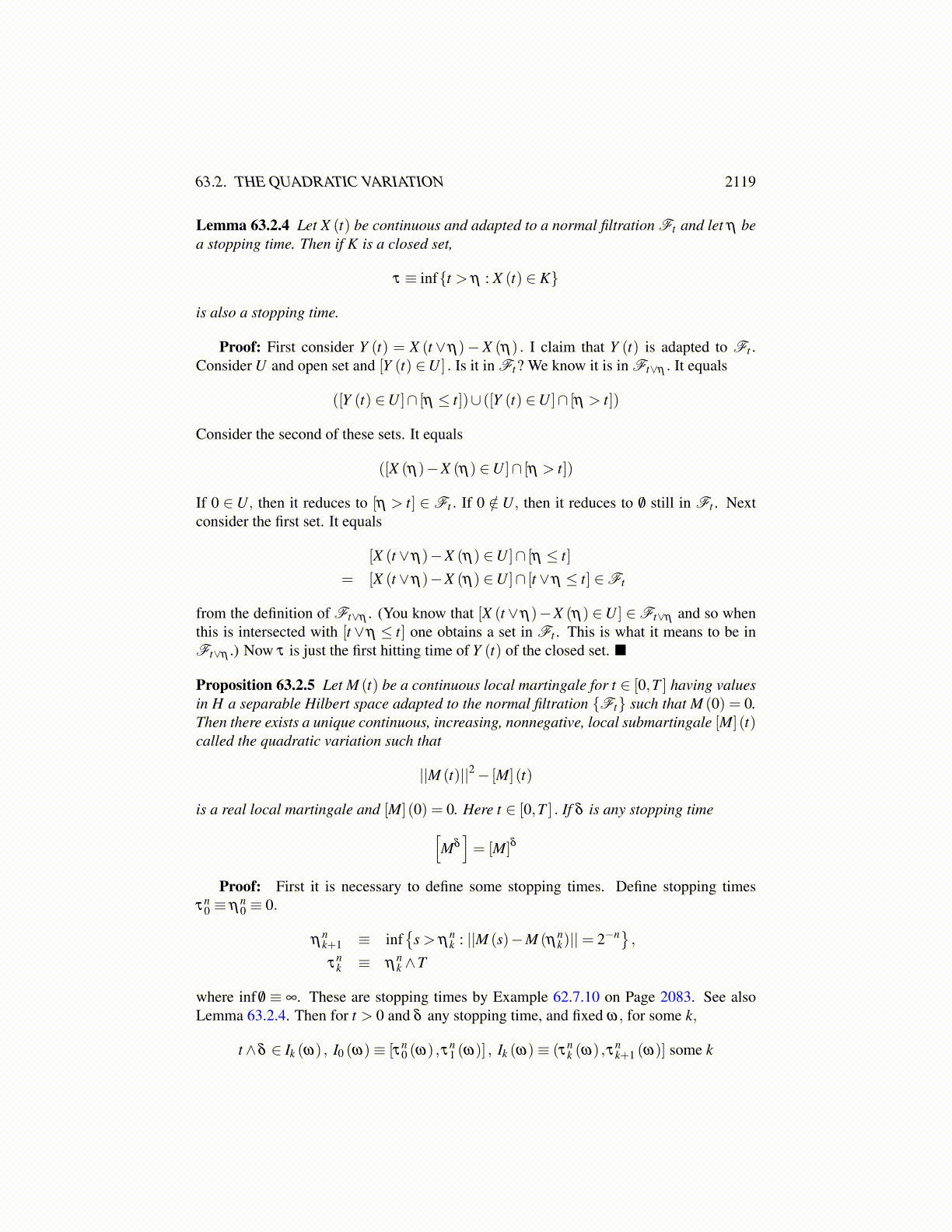
63.2. THE QUADRATIC VARIATION 2119
= E(E((Mτ (tk+1)−Mτ (tk))
(Mτ(t j+1
)−Mτ (t j)
)|Ftk
))= E
((Mτ(t j+1
)−Mτ (t j)
)E((Mτ (tk+1)−Mτ (tk)) |Ftk
))= E
((Mτ(t j+1
)−Mτ (t j)
)(Mτ (tk)−Mτ (tk))
)= 0
It follows
E(
Mτ (l)2)
= E
(n−1
∑k=0
(Mτ (tk+1)−Mτ (tk))2
)
≤ E
(n−1
∑k=0
Mτ (Pn) |Mτ (tk+1)−Mτ (tk)|)
≤ E
(n−1
∑k=0
Mτ (Pn)(|Aτ (tk+1)−Aτ (tk)|+ |Bτ (tk+1)−Bτ (tk)|)
)
≤ E
(Mτ (Pn)
n−1
∑k=0
(|Aτ (tk+1)−Aτ (tk)|+ |Bτ (tk+1)−Bτ (tk)|)
)≤ E (Mτ (Pn)2C)
the last step holding because A and B are increasing. Now letting n→ ∞, the right sideconverges to 0 by the dominated convergence theorem and the observation that for a.e. ω,
limn→∞
Mτ (Pn)(ω) = 0
because of continuity of M. Thus for τ = τC given above,
M (l∧ τC) = 0 a.e.
Now let C ∈ N and let NC be the exceptional set off which M (l∧ τC) = 0. Then letting Nldenote the union of all these exceptional sets for C ∈N, it is also a set of measure zero andfor ω not in this set, M (l∧ τC) = 0 for all C. Since the martingale is continuous, it followsfor each such ω, eventually τC > l and so M (l) = 0. Thus for ω /∈ Nl ,
M (l)(ω) = 0
Now let N = ∪l∈Q∩[0,∞)Nl . Then for ω /∈ N,M (l)(ω) = 0 for all l ∈ Q∩ [0,∞) and so bycontinuity, this is true for all positive l.
Note this shows a continuous martingale is not of bounded variation unless it is aconstant.
63.2 The Quadratic VariationThis section is on the quadratic variation of a martingale. Actually, you can also considerthe quadratic variation of a local martingale which is more general. Therefore, this conceptis defined first. We will generally assume M (0) = 0 since there is no real loss of generalityin doing so. One can simply subtract M (0) otherwise.